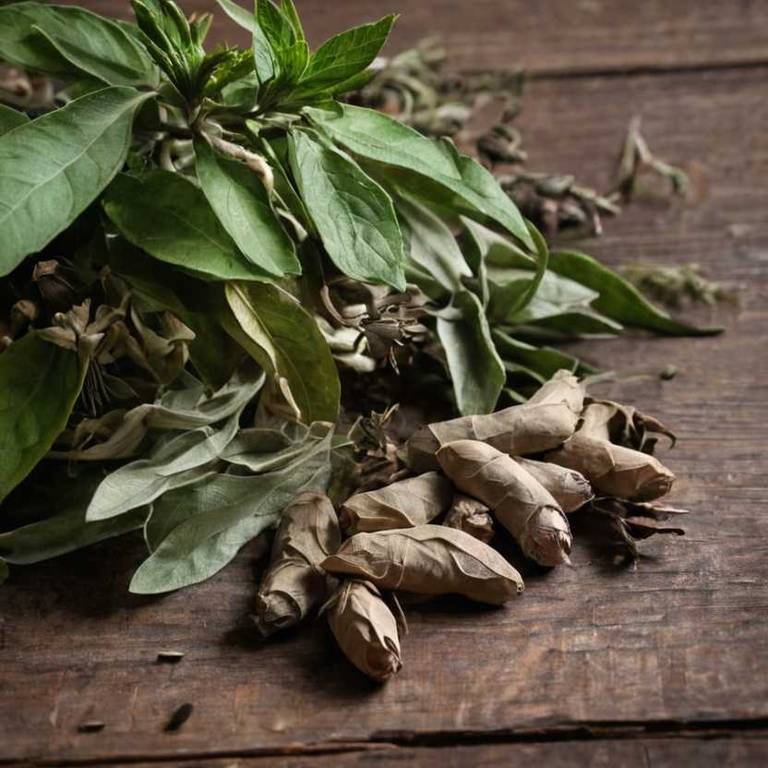By Leen Randell
Updated: Jul 20, 2024
10 Medicinal Constituents Of Magnolia Officinalis (Houpu)

Magnolia officinalis has active constituents such as magnolol and honokiol, which possess anti-inflammatory and antioxidant properties.
These constituents have been shown to have analgesic and sedative effects, making houpu a natural remedy for pain relief and insomnia.
By reducing inflammation and promoting relaxation, houpu constituents can improve people's lives by alleviating chronic pain, enhancing sleep quality, and reducing stress levels, ultimately leading to a better overall quality of life.
This article explains in details the 10 best active constituents of Magnolia officinalis.
1. Magnoflorine
Magnolia officinalis magnoflorine is a bioactive compound extracted from the bark of this species.
It has been used in traditional Chinese medicine for centuries to treat various ailments, including fever, rheumatism, and skin diseases. Magnoflorine possesses anti-inflammatory and antibacterial properties, making it a potential natural remedy for modern health concerns.
Research has also shown its ability to exhibit antioxidant and neuroprotective effects, suggesting its potential applications in the prevention of chronic diseases.
2. Obovatol
Magnolia officinalis, also known as Houpu, Obovatol is a bioactive lignan extracted from the bark of Magnolia officinalis Rehd et Wils., a traditional Chinese medicine plant.
It has been used to treat various ailments, including anxiety, depression, and insomnia. Research suggests that Obovatol may possess neuroprotective and anti-inflammatory properties, making it a potential therapeutic agent for neurological disorders.
Its mechanisms of action involve modulation of neurotransmitters and reduction of oxidative stress.
3. Honokiol
Magnolia officinalis honokiol is a bioactive compound extracted from the bark of the Chinese magnolia tree.
It has been used in traditional Chinese medicine for centuries to treat various ailments, including anxiety and insomnia.
Honokiol has been shown to have potent neuroprotective and anti-inflammatory properties, making it a promising agent for the treatment of neurological disorders such as Alzheimer's disease and Parkinson's disease.
4. Magnocurarine
Magnolia officinalis magnocurarine is a type of magnolia native to southern China and Taiwan.
It has been used in traditional Chinese medicine for centuries, prized for its purported anti-inflammatory and antiseptic properties.
The plant's bark, leaves, and seeds are commonly used in herbal remedies to treat a range of ailments, from respiratory issues to skin conditions.
5. Berberine
Magnolia officinalis berberine is a bioactive compound extracted from the bark and stem of the Magnolia officinalis tree.
It has been used in traditional Chinese medicine for centuries to treat various ailments, including cardiovascular disease, gastrointestinal issues, and infections.
Berberine has been shown to have antibacterial, antiviral, and anti-inflammatory properties, making it a popular natural remedy for supporting overall health and wellness.
6. Coptisine
Magnolia officinalis coptisine is a bioactive alkaloid compound extracted from the stem bark of Magnolia officinalis.
It has been used in traditional Chinese medicine for centuries to treat various ailments, including digestive issues and respiratory problems. Coptisine exhibits anti-inflammatory, antimicrobial, and antiviral properties, making it a popular ingredient in herbal remedies.
Its potential health benefits also include antioxidant activity, immune system modulation, and cardiovascular protection.
7. Epiberberine
Magnolia officinalis epiberberine is a bioactive compound extracted from the bark of Magnolia officinalis, a plant native to China.
It has been used in traditional Chinese medicine for centuries to treat various ailments, including cardiovascular and cerebrovascular diseases.
Epiberberine exhibits vasodilatory effects, improves blood lipid profiles, and inhibits platelet aggregation, making it a promising agent for the prevention and treatment of cardiovascular diseases.
8. Magnoflorigenin
Magnolia officinalis magnoflorigenin is a bioactive compound extracted from the bark of Magnolia officinalis Rehd et Wils.
It has been used in traditional Chinese medicine for centuries to treat various ailments, including digestive issues and respiratory problems. Research has shown that magnoflorigenin possesses anti-inflammatory, antioxidant, and antimicrobial properties, making it a promising agent for therapeutic applications.
Its potential uses also extend to the development of novel medicines for cancer treatment and prevention.
9. Euphemidine
Magnolia officinalis euphemidine is a bioactive compound extracted from the bark of Magnolia officinalis, a plant native to southern China.
This alkaloid has been traditionally used in traditional Chinese medicine for its potential therapeutic properties, including anticonvulsant and anti-inflammatory effects.
Research suggests that euphemidine may also have neuroprotective and antioxidant activities, making it a promising compound for the development of novel treatments for various diseases.
10. Isoorientaline
Magnolia officinalis isoorientaline is a unique alkaloid compound isolated from the bark of Magnolia officinalis Rehd.
et E.H.Wilson, a species native to China. This compound has been found to possess significant pharmacological activities, including anti-inflammatory, antioxidant, and anticancer properties.
It has also been shown to exhibit sedative effects and can be used as a potential therapeutic agent for treating various diseases.